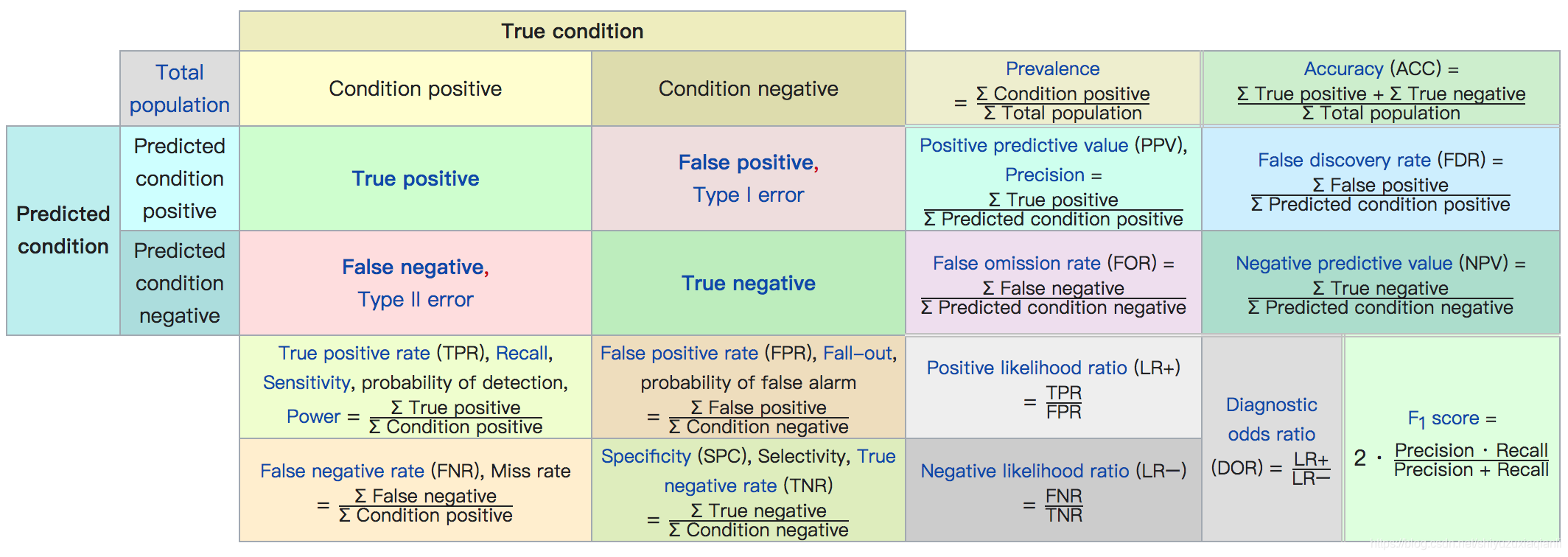什么是positive和negative
首先需要明确positive和negative的含义,不然很容易混淆。
The terms “positive” and “negative” do not refer to the value of the condition of interest, but to its presence or absence; the condition itself could be a disease, so that “positive” might mean “diseased”, while “negative” might mean “healthy”.1
翻译如下:
术语“阳性”和“阴性”不是指所关心的情况的值,而是指其存在或不存在;该情况本身可能是一种疾病,因此“阳性”可能意味着“疾病”,而“阴性”可能意味着“健康”。
如果对异常情况比较关注的话,那么“阳性(positive)”就是指存在异常,“阴性(negative)”就是指不存在异常。
什么是true和false
true指的是预测的情况和真实情况一致;
false指的是预测的情况和真实情况不一致。
误报率、漏报率、召回率
这几个概念太绕了,根据关注点的不同使用的频率也不相同。
对于我的日常而言,关注的是异常情况,所以一般用误报率和漏报率。
误报,别名虚警,指的是本来正常(Condition negative),但是误认为是异常(Predicted condition positive)。对应于FP,type Ⅰ error。
漏报,别名漏警,指的是本来异常(Condition positive),但是误认为是正常(Predicted condition negative)。对应于FN,type Ⅱ error。
漏报率+召回率=1
先整理到这里,后期继续更新。
从维基百科词条1截图如下:

see also
CSDN博客柚子敲好吃:异常检测中的评价指标——TPR/FPR/P/A/F/R
References
Wikipedia:Sensitivity and specificity ↩︎ ↩︎